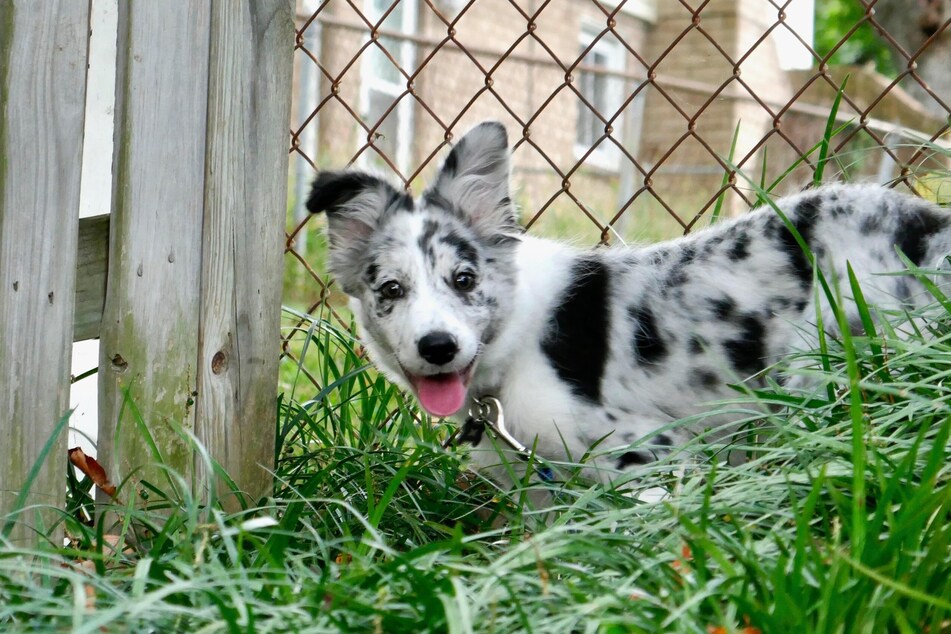Best merle dog breeds: Why do dogs have spots, and what is a merle dog?
Everyone loves a spotted dog, they are adorable and always happy to see you. Why do some dogs have spots, though, while others don't? And who is this "merle" anyway?

As you get used to having a dog, more and more questions start popping up. One such question is why certain dogs have those absolutely adorable spots, while others don't. Indeed, the answer to that question is quite interesting and curious in itself.
In this dog guide, TAG24 will take a look at merle dogs and answer the question of why dogs have spots. We'll also take a look at some of the best merle dog breeds in the world!
Why do dogs have spots?
The phenomenon of spotted dogs is caused by a difference in pigment between different sections of their fur, generally formed when the dog is an embryo. White areas on a dog's fur have no pigment cells, while colored areas have particular pigments that cause the spots to form in certain colors.
Health issues like hyperpigmentation cause irregular spots that suddenly appear on a dog's body. On top of that, a genetic pattern called "Merle" creates a mottled pattern of spots on the coat. This will be the primary subject of this article.
What is a merle dog?
Here's the deal: genetics are complicated and hard to explain, so we're going to try and keep this exceedingly short and simple. The thing that controls the color of a dog's coat is called a pigment, and it is determined by a dog's genetics.
Importantly, there are two kinds of pigment, each with utterly unpronounceable names. You see, canines have three basic colors – brown, black, and red – each of which are determined by a dog's pigmentation, but a merle dog has a mutation which causes one of those two pigments to change color.
When the eumelanin (one of those two difficult-to-spell pigment genes) lightens, the other pigment remains the same. This creates a spotted look, generally in an irregular pattern. In terms of the colors themselves, though, this mutation can cause a lightening of the coat, or could even erase the color altogether, leaving white spots!
Not-so-fun fact: This genetic mutation can also effect the color of a dog's eyes, and lends itself to a variety of health issues, which we will discuss in a moment.

Are all spotted dogs merle?
No, not every spotted dog is a merle. This refers to a particular genetic trait, and there are a variety of other reasons why your dog may have developed spots later on in life (often due to health concerns), or at birth (usually due to pigmentation developed in the womb).
Are there any health problems with merle or spotted dogs?
To answer this question, you have to split the issue into two distinct categories: Health problems associated with the merle gene, and health issues that may cause spots in an otherwise healthy doggo.
Health concerns associated with merle dogs
While the vast majority of merle dogs will be completely fine, they have a heightened risk of multiple different health issues due to their genetic differences. As a result, it is important to separate merles into two distinct categories: Those with two merle alleles (variations in a DNA sequence), and those with only one.
According to an article by Dr. Caroline Coile for the American Kennel Club in 2022, while dogs with one merle allele are more likely than standard dogs to develop conditions like deafness and blindness, there is still less than a 1% chance. On the other hand, if a merle dog has two alleles, the odds can increase to 85% for certain breeds.
Ultimately, the danger boils down to how the dogs were bred. In countries like Germany, merle-to-merle breeding is outlawed, but that is yet to be federally legislated in the United States.
While it is not known why merle-on-merle breeding causes health problems, the challenges are very clear. Some of the negative effects of the merle gene include:
- Blindness
- Deafness
- Microphthalmia (abnormally small eyes/pupils)
- Large sections of white, pigment-less fur
- Increased risk of skin cancer due to less sun protection
Health issues that cause spots on dogs
There are a variety of skin issues that can create spot-like blemishes on your dogs skin and in its fur. Such issues will require medical attention. Generally, a good rule to follow is that if your dog has developed spots out of the blue, take it to the veterinarian.
Some health issues that can cause spot-like symptoms on a dog include the following:
- Rashes and irritated skin
- Fly bites, or those from a different insect
- Ringworm spots
- Bacteria and fungal infections
- Hives caused by allergies
- Other allergic reactions
- Hot spots
- Parasites
Health issues are a leading cause of skin and fur-related issues in dogs, and should be taken very seriously. This is not an exhaustive list, so be sure to go to the vet if you're concerned!
What does a merle dog look like?

A merle dog does not have the regular spots that you would expect from the likes of a Dalmatian, but instead has blotches on its fur that form an irregular pattern.
The way that merle works is that you get different shades of the same fur pigment, layered atop each other, with the lighter color serving as a "base". There are a number of different variations, with the most common base colors being black on gray or solid brown on a tanned red.
Fun fact: On top of the various fur patterns and colorings, merle dogs typically have blue eyes!
Best merle dog breeds
Merle dogs are widely known to be extremely cute, beautiful, and interesting to look at. There is such a demand for dogs that look this way that a variety of breeds have been genetically modified to possess this trait.
Some of the best merle dog breeds include the following:
- Australian shepherd
- Beauceron sheepdog
- Border collie
- Cardigan Welsh corgi
- Catahoula leopard dog
- Chihuahua
- Cocker spaniel
- Collie
- Dachshund
- Great Dane
- Norwegian hound
- Pit bull
- Pomeranian
- Pyrenean shepherd
- Shetland sheepdog
This is by no means an exhaustive list, and there are plenty of other dogs out there that have been bred to possess the merle gene. One thing's for sure: you will pay a lot of money for one of these beautiful pooches.
Merle colored dog varients
As we established, merle dogs have three different types of coats. It comes down to the basic color: Is your dog's base color a red-brown, a blue-gray, or more of a mosaic?

Red merle
The term "red" merle refers to a dog whose merle pigment is a red or brown color, as this will be the general color of their spots. Specifically, this coloration occurs when the red content of the dog's coat is relatively high and the black has been lightened or erased.
Interestingly, red merles are rather rare, and often have a very light dose of the merle gene – resulting in only single hairs becoming discolored and the dog developing a light red tinge. These adorable doggos are often alternatively referred to as chocolate merle or brown merle.
Blue merle

Blue or black merles have a coat that is usually gray with black spots. This discoloration occurs when the actual base color of their coat would have been black, if it hadn't been for the merle mutation. Many of these beautiful canines end up with a silver-gray or blue tinge.
Mosaic merle dogs
A dog that is a mosaic merle is harder to pinpoint. It is not easily distinguishable from a normal merle, but has a genetic peculiarity that will carry different information or alleles in their cells.
As a result, they may not fit into the two other categories listed here and might look different in one way or another.
Merle dogs are cute, but some have health problems
Merle dogs are not fancy accessories to a treasure-filled lifestyle, but real living creatures that have been bred to look the way they do. While they are insanely cute and remarkably beautiful at times, you should understand that they don't come without health problems.
Sometimes, spotted dogs are not always your best bet for adoption. Discuss with the breeder, gather all the relevant information, and make an informed decision.
Cover photo: 123RF / Dorazett



